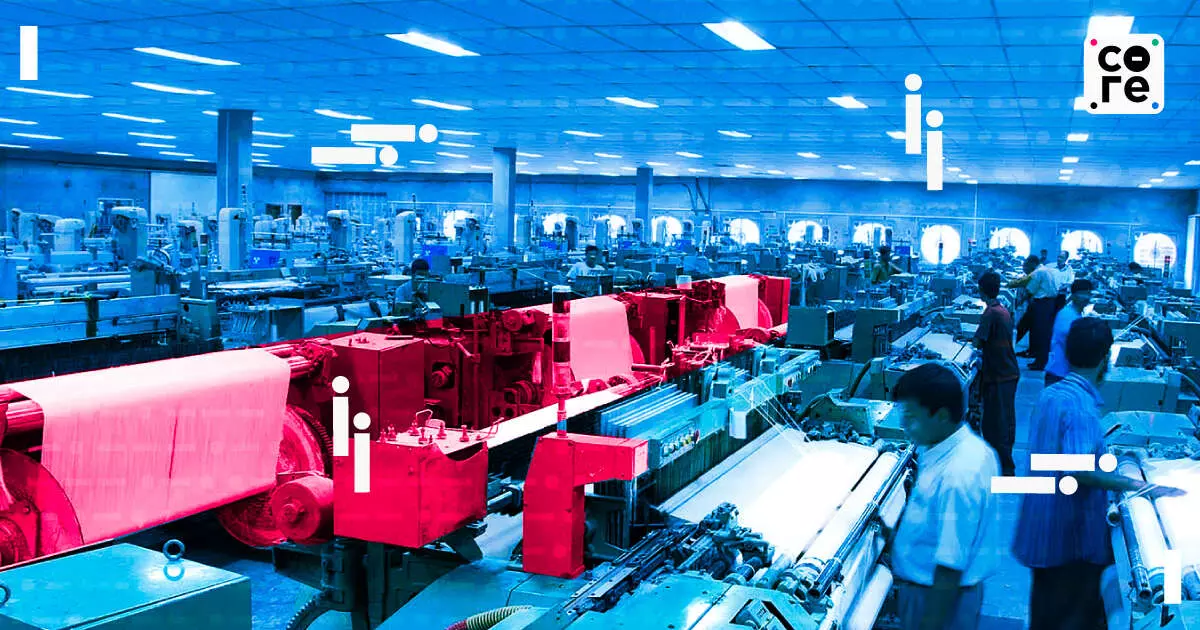
Textile Hub Tiruppur Wary of Tariff Gains, Seeks Govt Safeguards
Most US buyers are bargaining, asking exporters to bear a part of the tariff burden, even as reports say that they might gain from redirected orders from other countries.

It might look like Indian garment manufacturers could gain from the higher tariffs imposed on their closest competitors in China, Vietnam and Bangladesh. Yet, India’s largest textile hub in Tiruppur of Tamil Nadu is not celebrating yet. Forget excess orders flowing in, even the current orders that they are in a state of quandary, owing to the uncertainty about tariffs that both importers as well as exporters face.
GR Senthivel, secretary of the Tiruppur Exporters and Manufacturers Association (TEAMA), categorically said that the window is not open. Importers, he said, are driving a hard bargain with Indian manufacturers, as they too face the heat of Trump’s tariffs. Also, no such extra orders are being redirected from its South Asian counterparts.
“The window is not at all open. All the exporters and manufacturers, and importers are waiting. They are holding the transactions, they are holding the orders, holding the business to wait for the final outcome,” he said.
Not The Right Time To Fix This Problem
TEAMA has 1,200 members, and half of them — 600 are exporters. For these small manufacturers, most of whose annual turnover is less than Rs 10 crore, little has changed, except longer and extended negotiations.
Even as there is a 90-day pause in the tariffs, the US government’s 10% base tariff has become the basis of these conversations.
Senthivel said that a few buyers insist that manufacturers take on half of the tariff burden. A few others are seeking a 10% reduction in rates. “Otherwise, they say we hold the shipments, hold the production, no further orders. This sort of thing is going on,” he adds.
He insists that his buyers are also coming from a place of uncertainty, as the tariffs might go up even after fixing on a certain price or a sharing agreement. “The US counterpart is not 100% about what their government is going to do. If it is, they fix it with 26%, next month maybe Trump will go for 46%. It is not the right time, right thing for them to fix this problem,” Senthilvel said.
If at all, extra orders come in, Tiruppur has enough resources to take them in, but the association is of the view that the issue is more political than anything else. “If the US government is imposing this taxation, it means we will benefit. Yes, the general view, that's our view. It is not going to happen. Unless otherwise, some sort of solution will arrive by the governments, there is no use of going for other steps,” he insisted.
Despite the many troubles, including consumption slowdown across the globe, Tiruppur clocked in Rs 40,000 crore in export revenue in FY25, which was its highest-ever export revenue. Tiruppur, which is also nicknamed Dollar City, accounts for 90% of India’s cotton knitwear exports and 55% of overall knitwear exports.
Central Govt Duty To Safeguard Exporters
The US vice president JD Vance landed in India, with his wife and three children adorably dressed in ethnic Indian clothing on April 21, 2025. Indian farmer associations have called for a protest against Vance negotiating a trade deal which might see an increase in food and cattle feed imports to India. As these larger troubles persist with trade, Trump and tariffs, the garment manufacturers hope that the government might move to protect them.
“This is the right time for our central government to interfere in this one, to safeguard all the exporters. It is their duty,” Senthilvel says. They are making representations to the government to cut interest rates and provide subsidies.
The garment exporters claim that they have been on the receiving end ever since India signed the World Trade Organization (WTO) agreement in 1995. The WTO works towards the free flow of trade and establishes rules for the same. Ever since it became a part of it, India has been revoking subsidies and incentives given to Indian exporters, to establish a common ground for manufacturers across countries.
Earlier, Indian garment manufacturers received incentives on their export value, called drawbacks. They were once at 16%, which dropped subsequently and regularly to 1%. “We got information that the government people are told that while we're signing the WTO and GATT (General Agreement on Tariffs and Trade), we have to close all our subsidies to the industry,” he said.
Most US buyers are bargaining, asking exporters to bear a part of the tariff burden, even as reports say that they might gain from redirected orders from other countries.
Most US buyers are bargaining, asking exporters to bear a part of the tariff burden, even as reports say that they might gain from redirected orders from other countries.

